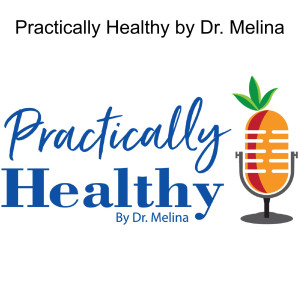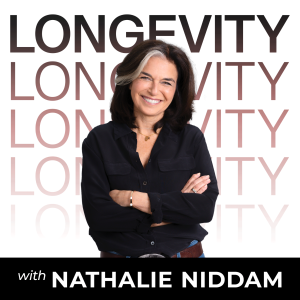

Sigma Nutrition Radio
https://sigmanutrition.libsyn.com/rssEpisode List

#572: Can You Trust Industry-Funded Nutrition Studies? Here’s How to Tell
Nutrition science plays a pivotal role in shaping public health advice, but the influence of industry funding on research has become a pressing concern. In this episode we want to examine whether we can trust nutrition studies funded by food and beverage companies, and how you can discern study credibility. The discussion is highly relevant in today’s landscape, where conflicts of interest and bias in research are under scrutiny amidst debates on sugar, processed foods, and diet recommendations. By exploring how industry sponsorship might skew results or interpretations, this episode speaks to broader issues of scientific trustworthiness and evidence-based policy in nutrition and public health. In this episode, we take a look at some recent publications that showed how study results and reporting differed significantly depending on if industry had funded the study or not. We delve into how this happens. As most often it is not a case of data fabrication or corruption, but rather how bias leads to studies being designed and reported differently. We walk through some examples, as well as highlighting some industry-funded studies that didn’t provide a “pro-industry” result and conclusion. The hope is that the episode allows you to understand why this is a problem, how to spot it, and how to know if you can trust the results of an industry-funded study. Timestamps [00:36] Alan’s upcoming study [04:47] Discussion on industry funding in nutrition research [15:06] Case study: industry influence on red meat research [30:43] Case study: artificial sweeteners and industry influence [36:37] Case study: sugar industry’s role in research [38:06] Critical appraisal of industry-funded studies [51:58] Case study: when industry-funded study results can be trusted [01:01:51] Guidelines for assessing research quality [01:07:14] Key ideas segment (premium-only) Related Resources Join the Sigma email newsletter for free Subscribe to Sigma Nutrition Premium Join Alan's Alinea Nutrition Research Hub Enroll in the next cohort of our Applied Nutrition Literacy course Recommended episode: #472: Compared To What? – Understanding Food Substitution Analysis & Adjustment Models Studies mentioned: López-Moreno et al., Am J Clin Nutr. 2025 Jun;121(6):1246-1257 Tobias, 2025 – You are what you don’t eat Mandrioli D, Kearns CE, Bero LA (2016) PLOS ONE 15(3): e0230469 Schillinger et al., Ann Intern Med. 2016 Nov 1;165(12):895–897 Schmidt et al., 2021 – The impact of diets rich in low-fat or\ full-fat dairy on glucose tolerance and its determinants: a randomized controlled trial Schmidt et al., 2021 – Impact of low-fat and full-fat dairy foods on fasting lipid profile and blood pressure: exploratory endpoints of a randomized controlled trial

#571: Is Zone 2 Training Actually Best for Health? – Prof. Brendon Gurd
In recent years “Zone 2 training” has gained immense popularity in fitness and health circles, often being proclaimed the “best” cardiovascular training for metabolic health. Zone 2 training is sustained, low-intensity exercise below the lactate threshold that is commonly employed by many elite level endurance athletes, with a variety of proposed performance benefits. This led to interest from health-conscious folks about its ability to improve markers like VO2 max and mitochondrial function, which are associated with better health outcomes and longevity. Prof. Brendon Gurd, an exercise physiologist at Queen’s University, is the co-author of a recent review published in Sports Medicine that examined some of the claims made around zone 2 training and health in the general population. This episode looks at whether the evidence truly supports Zone 2 as a uniquely effective training zone or if this hype has outpaced the research. These insights help professionals and individuals make evidence-based recommendations and avoid unintended negative consequences of following certain ideas. About The Guest Dr. Brendon Gurd is a Professor in the School of Kinesiology and Health Studies at Queen’s University, where his research focuses on exercise physiology and skeletal muscle adaptation. His work explores how different intensities and types of exercise influence mitochondrial content and function in muscle tissue, with the goal of understanding how to optimize health and performance through training. Timestamps [03:23] Discussion with Professor Brendan Gurd [05:56] Zone two training: Mechanisms and misconceptions [10:56] Practical applications and recommendations [22:16] Research gaps and future directions [35:47] Key ideas segment (Sigma Nutrition Premium) Links to Resources Subscribe to Sigma Nutrition Premium Join the Sigma email newsletter for free Enroll in the next cohort of our Applied Nutrition Literacy course List of Sigma's Recommended Resources Review paper: Storoschuk et al., 2025 – Much Ado About Zone 2: A Narrative Review Assessing the Efficacy of Zone 2 Training for Improving Mitochondrial Capacity and Cardiorespiratory Fitness in the General Population Lecture Slides: Prof. Brendon Gurd – Is Zone 2 the optimal intensity for inducing mitochondrial adaptation?

#570: Fructose: Metabolism, Claims & Context for Risk – Scott Harding, PhD
Fructose has often been labeled a uniquely damaging nutrient, blamed for obesity, diabetes, and other metabolic diseases. But does fructose truly have unique harmful effects or are the risks associated with it related to context and quantity? The episode explores how fructose is metabolized in the body, why it gained a reputation for being problematic, and what the scientific evidence says about fructose in our diets. You will gain insight into why fructose was singled out in the past (e.g., its unique pathway in the liver and lack of insulin response), and how newer studies put those concerns into context. It covers important nuances for practitioners and health-conscious individuals, especially given public confusion and fear around fructose (even in fruit). Guest Information Dr. Scott Harding, Ph.D., is an Associate Professor of Nutritional Biochemistry in the Department of Biochemistry at Memorial University of Newfoundland. His research explores the complex interactions between diet, metabolism, and chronic disease, with a particular emphasis on the metabolic effects of dietary sugars (especially fructose), the role of fats and phytosterols in lipid metabolism, and how public health policies like sugar taxation influence population health outcomes. Timestamps [02:58] Dr. Harding’s academic background [08:45] Fructose metabolism in detail [12:51] Fructose in diet and public health [23:07] Current research [29:53] Identifying biomarkers for fructose overconsumption [31:12] Fructose impact on health [40:58] The food matrix [45:10] Personalized nutrition and future research directions [54:06] Key ideas segment (premium-only) Related Resources Subscribe to Sigma Nutrition Premium Join the Sigma email newsletter for free Enroll in the next cohort of our Applied Nutrition Literacy course Related podcast episodes: #476, #468, #155 See Sigma's "Recommended Resources"

SNP42: Is Vitamin A Good or Bad for Bone Health?
Vitamin A is often one of the less-discussed micronutrients in relation to bone health, taking a back seat to nutrients like calcium and vitamin D. Yet this fat-soluble vitamin plays a fundamental role in skeletal development, remodeling, and mineral homeostasis. It influences gene expression in both osteoblasts and osteoclasts, and contributes to the regulation of bone turnover throughout the lifespan. But what makes vitamin A particularly interesting, and controversial, is that its effects on bone appear to follow a double-edged pattern. While it’s essential for bone formation, several large epidemiological studies have suggested that chronically high intakes of preformed vitamin A may actually increase the risk of osteoporosis and fracture, especially when consumed as retinol from supplements or high-liver diets. And yet, the picture is not so clear-cut. This raises compelling questions: Is the concern over vitamin A and bone health justified, or is it a case of context-dependent risk? Can vitamin A, when combined with adequate levels of D and K, actually support bone strength? And are there thresholds above or below which risk increases? In this episode, we explore the human evidence on vitamin A and skeletal health, looking not only at fracture outcomes and bone mineral density data, but also at nutrient interactions, mechanistic plausibility, and the implications for supplement use in well-nourished populations. Note: This is a Premium-exclusive episode, so you will only hear a preview on this public feed. Timestamps [00:23] Vitamin A and bone health: an overview [02:50] Forms of vitamin A: retinol and carotenoids [04:16] Mechanisms of vitamin A in bone physiology [17:52] Nutrient interactions: vitamin A, D, and K [31:03] Practical takeaways and recommendations Related Resources Subscribe to Sigma Nutrition Premium Join the Sigma email newsletter for free Go to Sigma Nutrition.com Enroll in the next cohort of our Applied Nutrition Literacy course

#569: The History of Fat, Cholesterol & Heart Disease
The idea that saturated fat might be harmful to our health has sparked controversy for decades. In recent years, counter-narratives have surged: suggesting that concerns over saturated fat were overblown, that LDL cholesterol doesn’t matter, or that the original diet-heart hypothesis has been debunked. These claims have become especially popular in online wellness spaces and certain dietary communities, often wrapped in compelling but misleading rhetoric. So what does the best available evidence actually say? And how should we think about saturated fat, LDL cholesterol, and cardiovascular risk in the current day? In this wide-ranging interview, originally recorded for the Chasing Clarity podcast, Alan and Danny explore the scientific consensus around saturated fat’s impact on blood lipids, why LDL and apoB are central to atherosclerotic disease, and how dietary patterns can meaningfully reduce risk. Importantly, they also address some of the most persistent myths and half-truths that fuel confusion, from flawed interpretations of the Seven Countries Study to misrepresentations of newer meta-analyses. Timestamps [03:41] How do we know saturated fat impacts LDL-C? [05:28] Metabolic ward studies and key findings [11:13] The Keys equation and subsequent research [17:17] Epidemiology and long-term studies [31:48] The Seven Countries Study [44:25] Understanding the impact of saturated fat on blood lipids [47:23] Historical and research perspectives on saturated fat [50:43] Practical dietary strategies for improving blood lipids [53:48] The Portfolio Diet and other dietary interventions [58:07] The role of pharmacology in managing blood lipids [01:00:58] Addressing misconceptions and common claims [01:13:57] Key ideas segment (premium-only) Related Resources Subscribe to Sigma Nutrition Premium Join the Sigma email newsletter for free Enroll in the next cohort of our Applied Nutrition Literacy course Alan Flanagan’s Alinea Nutrition Education Hub Related episodes to add to your podcast queue: 532, 525, 515, 493, 481, 439
You may also like
Create Your Podcast In Minutes
- Full-featured podcast site
- Unlimited storage and bandwidth
- Comprehensive podcast stats
- Distribute to Apple Podcasts, Spotify, and more
- Make money with your podcast











